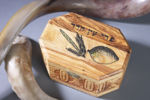Sukkot
From Giftypedia
Sukkot is the last of the three festival feast. Like Passover and Shavu'ot, Sukkot has dual significance. Historically sukkot, which means booths, commemorates the 40 year period in which the Israelites wandered the desert after fleeing Egypt. A time when they lived in temporary shelters. Agriculturally it is a harvest festival referred to as Chag Ha-Asif, the Festival of Ingathering.
[edit] Traditions
Sukkot last for seven days. No work is permitted on the first two days of the holiday.
Jews are commanded to dwell in temporary shelters known as sukkah. To fulfill the commandment of dwell on must eat meals in the sukkah. If weather permits one should spend as much time as possible in the sukkah, even sleeping at night.
[edit] Building a Sukkah
The sukkah must have two and a half walls. The walls do not have to be solid but cannot be blown away by wind. There is no size restrictions on the sukkah but it must be large enough to live in. The roof must be made of material referred to as sekhakh or covering. The sekhakh must be grown from the ground and cut off; tree branches, corn stalks, and sticks will qualify. The covering must be left loose and not tied down and must be placed so rain can come in and the stars can be seen, but not so there is more light than shade.
[edit] Arba Minim - the Four Species
Another observance of sukkot is arba minim, the four species, or the lulav and etrog. One must take these four plants and rejoice. The etrog is a citrus similar to a lemon and native to Israel. A palm branch, lulav, two willow branches or aravot and three myrtle branches, hadassm are tied together and called lulav since the palm branch is the largest. The lulav is held in the right hand and the etrog in the right. They are waved in all directions during blessings. They are also held and waved during the Hallel prayer in religious services and during the process around the bimah. On the seventh day of Sukkot seven circuits are made around the bimah the willow branches are then beat against teh floor five times shking loose leaves. The falling leaves represent the desire for rainfall.
[edit] Sources
[edit] Related Links



 Printer Friendly
Printer Friendly
